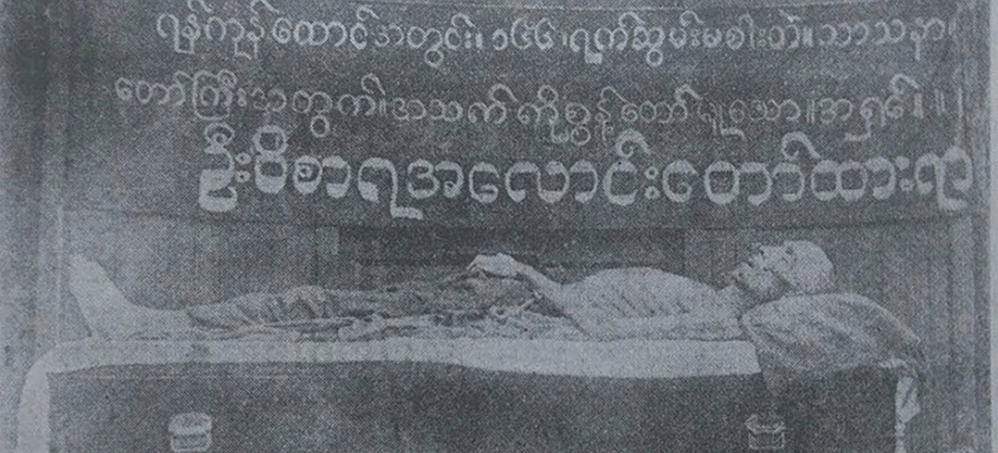
24 April 1889 - 19 September 1929
U Wisara
room Myanmar
Myanmar has a long history of political prisoners and prisoners of conscience. One particularly famous political prisoner during the colonial period was the nationalist Buddhist monk U Wisara (1889-1929) who was born Hla Kyaw in a small village in Upper Myanmar just as the British were establishing control over the remains of the Konbaung kingdom. In his youth, he entered the monkhood as a novice or ko-yin during which time he gained the dhamma name “Wisara” or Vicāra, meaning “discursive thinking.”
U Wisara left the monkhood and married twice, first in an arranged marriage which quickly broke down, and then again to his childhood sweetheart. These marriages produced two children. In 1912, at the age of 23, he decided to leave his family and enter the monkhood for good. In a monastery in Mandalay, he studied the dhamma (the Buddha's teachings) and the vinaya (the rules for the monks). Later he would travel to India to study Pali and Sanskrit for two years.
In the 1920s, U Wisara became involved in the nascent Burmese nationalist movement. In 1923, he met the ardent nationalist and Arakanese Buddhist monk U Ottama and began travelling the country along with him giving fiery speeches against British rule. The British authorities were none too pleased. The colonial government feared the power that activist Buddhist monks (“political pongyees” as they called them) could wield over the Burmese people, and so they wanted to neutralize it.
In 1926, U Wisara was arrested for giving a seditious speech and imprisoned. While in prison, the guards insisted that he wear the inmates’ uniform. When he refused, arguing that he was a devout Buddhist monk and that he would not disrobe, they stripped him. What he did next would change the course of Burmese history. U Wisara went on a hunger strike until the prison guards would allow him to wear his monk's robes. Forty days into the strike, fearing the idea of having a dead monk on their hands in a time of Buddhist resistance to British rule, U Wisara’s British jailors relented and allowed him to wear the robe and fast on sabbath days.
The hunger strike was a tactic that Mahatma Gandhi had used to great effect in his protests against the British in India and South Africa, and U Wisara may have been inspired by him (coincidentally, he would give an anti-colonial speech on the occasion of Gandhi’s visit to Myanmar in 1929).
The second time he went to prison, in 1929, U Wisara began a hunger strike that would be his last. Despite his having fasted for four months, the British did not relent this time, and continued to prohibit the monk from wearing his robes. Finally, after 166 days, U Wisara died in Rangoon prison of starvation, and his body was unceremoniously dropped off by police at a monastery at 3 a.m. But the British had made a mistake. News of U Wisara’s death sent ripples throughout Myanmar and fed the flames of the growing Burmese nationalist movement. Almost immediately this middle-aged monk became a martyr (azani): when his body was cremated and buried near the Shwedagon Pagoda, thousands were in attendance.
U Wisara’s hunger strike and death demonstrates not only the connections between Buddhism and the Burmese nationalist movement, and Indian and Burmese anti-colonial nationalism, but also the effects that non-violent resistance can have on public opinion and support for a government no matter the time or place.
There is still a road in Yangon called U Wisara Road (formerly Voyle Road) and a monument commemorating the activist monk in the centre of the roundabout to the southwest of the Shwedagon Pagoda, not far from where his remains were interred.